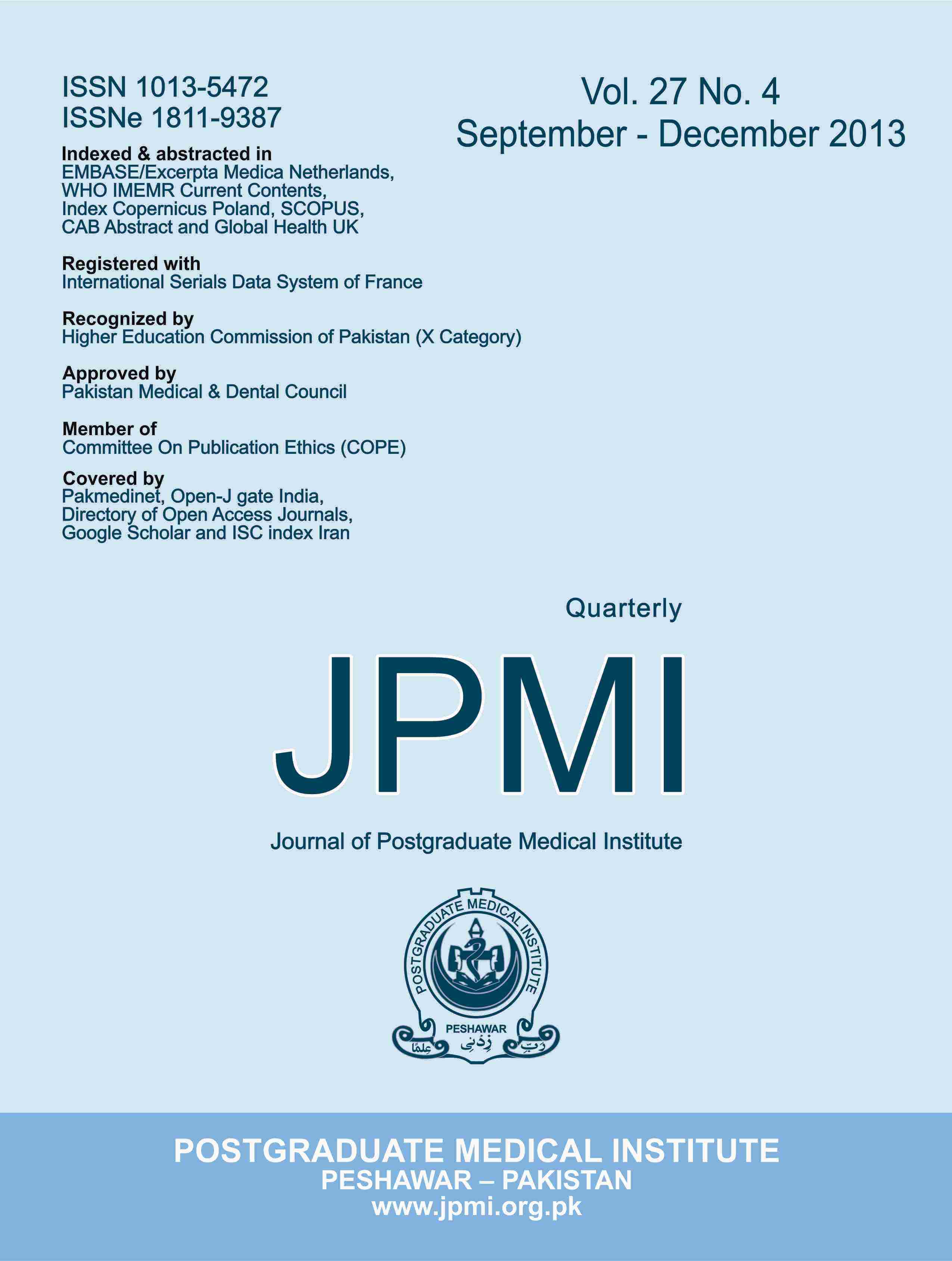A comparative analysis of hyperhomocysteinemia in hemodialysis patients versus normal controls
Main Article Content
Abstract
Objective: To compare the mean homocysteine level of ESRD patients undergoing regular hemodialysiswith normal age and gender matched controls.
Methodology: This observational study was conducted at Dialysis Unit of Fauji Foundation Hospital, fromJanuary 2011 to October 2012. Cases included patients from 12-65 years age of either gender who wereon regular hemodialysis for more than three months at a frequency of three times a week. Controls werechosen from the healthy relatives and hospital employees who had normal renal functions and were matchedfor age and gender. Total homocysteine in plasma was measured by HPLC and fluorescence detection.
Results: We included 55 hemodialysis patients and 55 controls. The mean age of cases and controls was45.67±10.68 and 45.94±10.50 years respectively. There were a total of 24 (21.8%) males. The two groupswere similar in respect to age and gender distribution. The mean homocysteine level of cases and controlswas 17.69±5.17 and 12.85±3.27 μmol/L respectively (p =0.00).
Conclusion: Plasma homocysteine levels are significantly higher among homodialysis subjects as comparedto normal controls.Article Details
Work published in JPMI is licensed under a
Creative Commons Attribution-NonCommercial 2.0 Generic License.
Authors are permitted and encouraged to post their work online (e.g., in institutional repositories or on their website) prior to and during the submission process, as it can lead to productive exchanges, as well as earlier and greater citation of published work.


